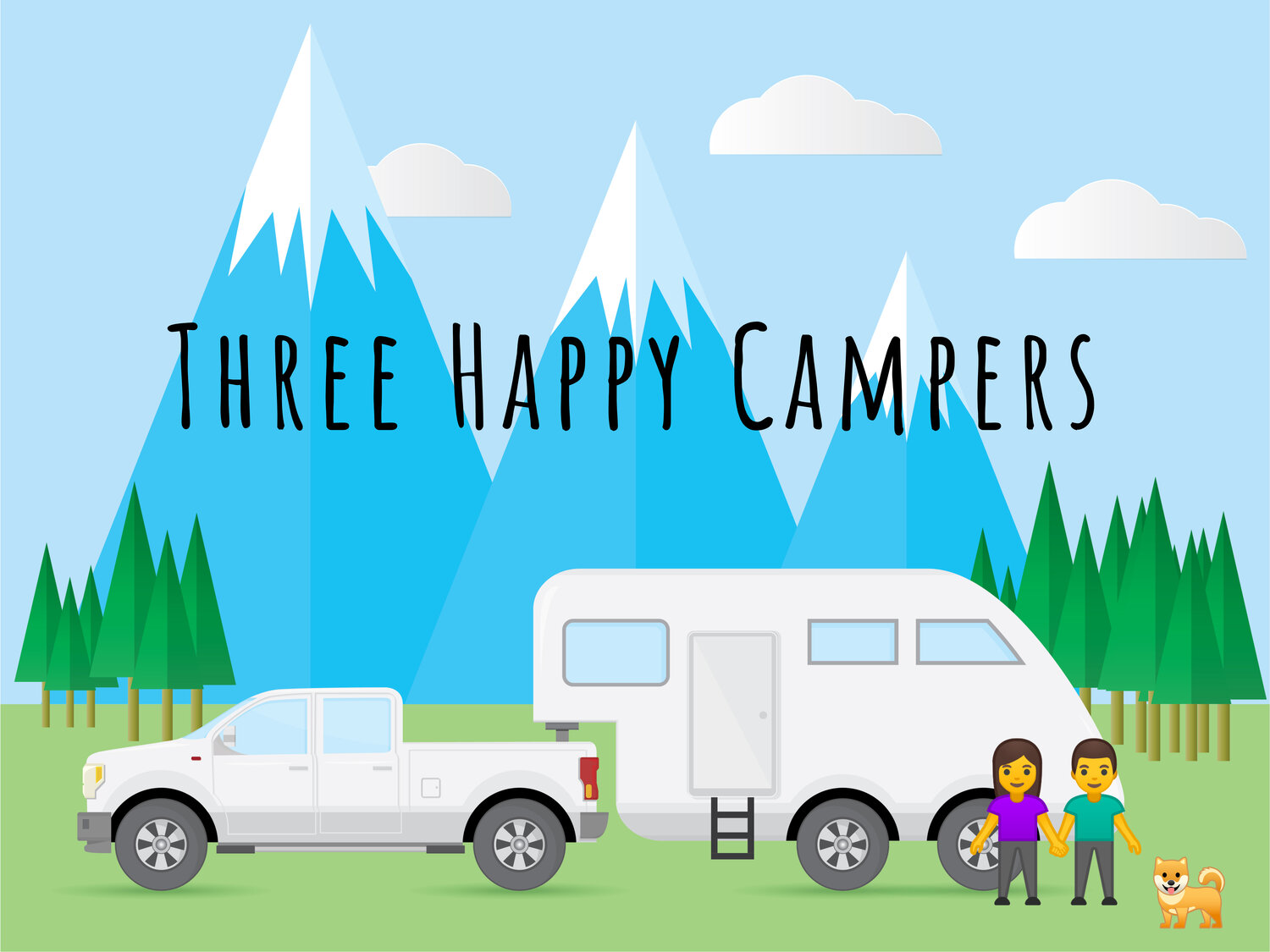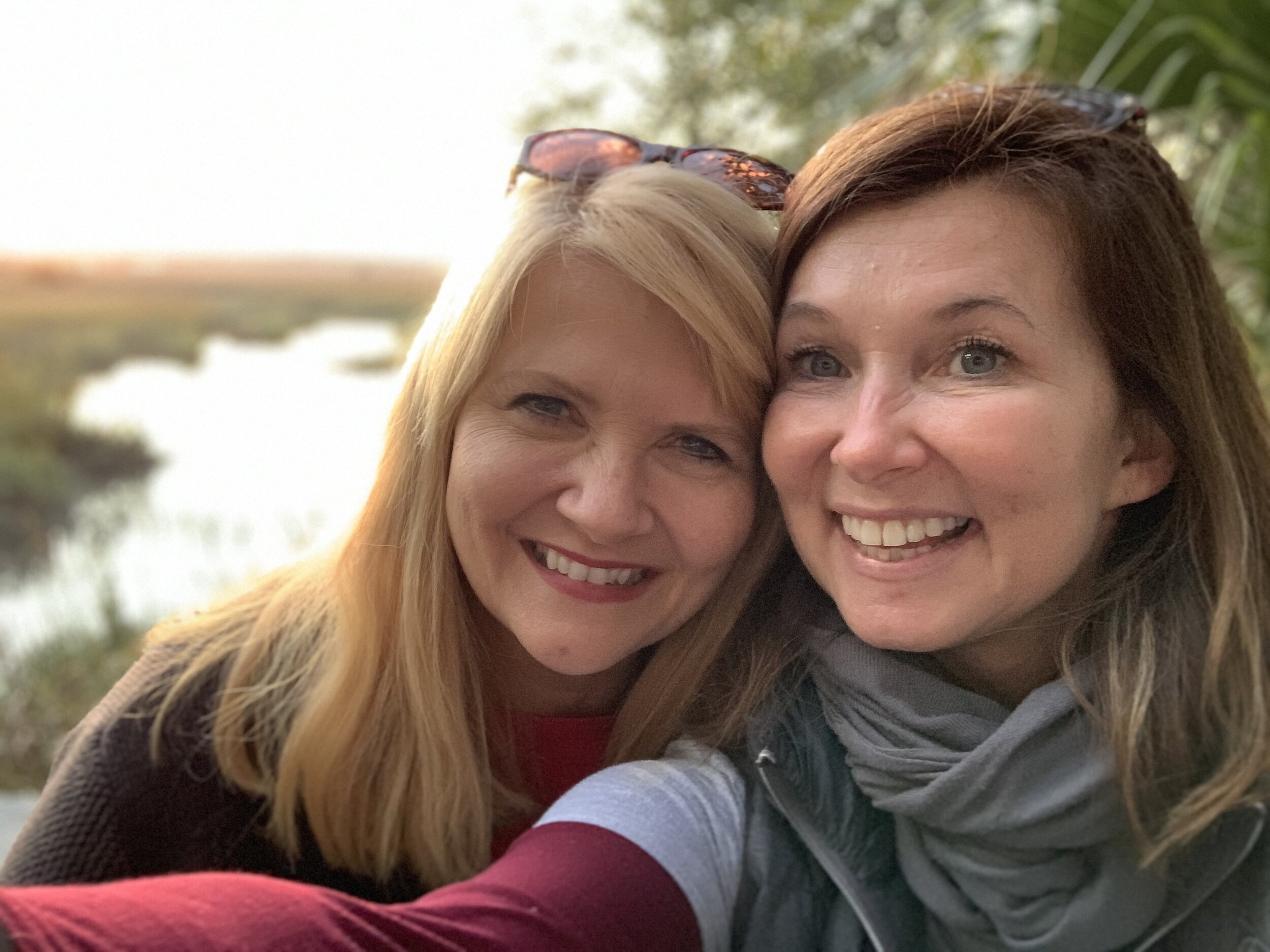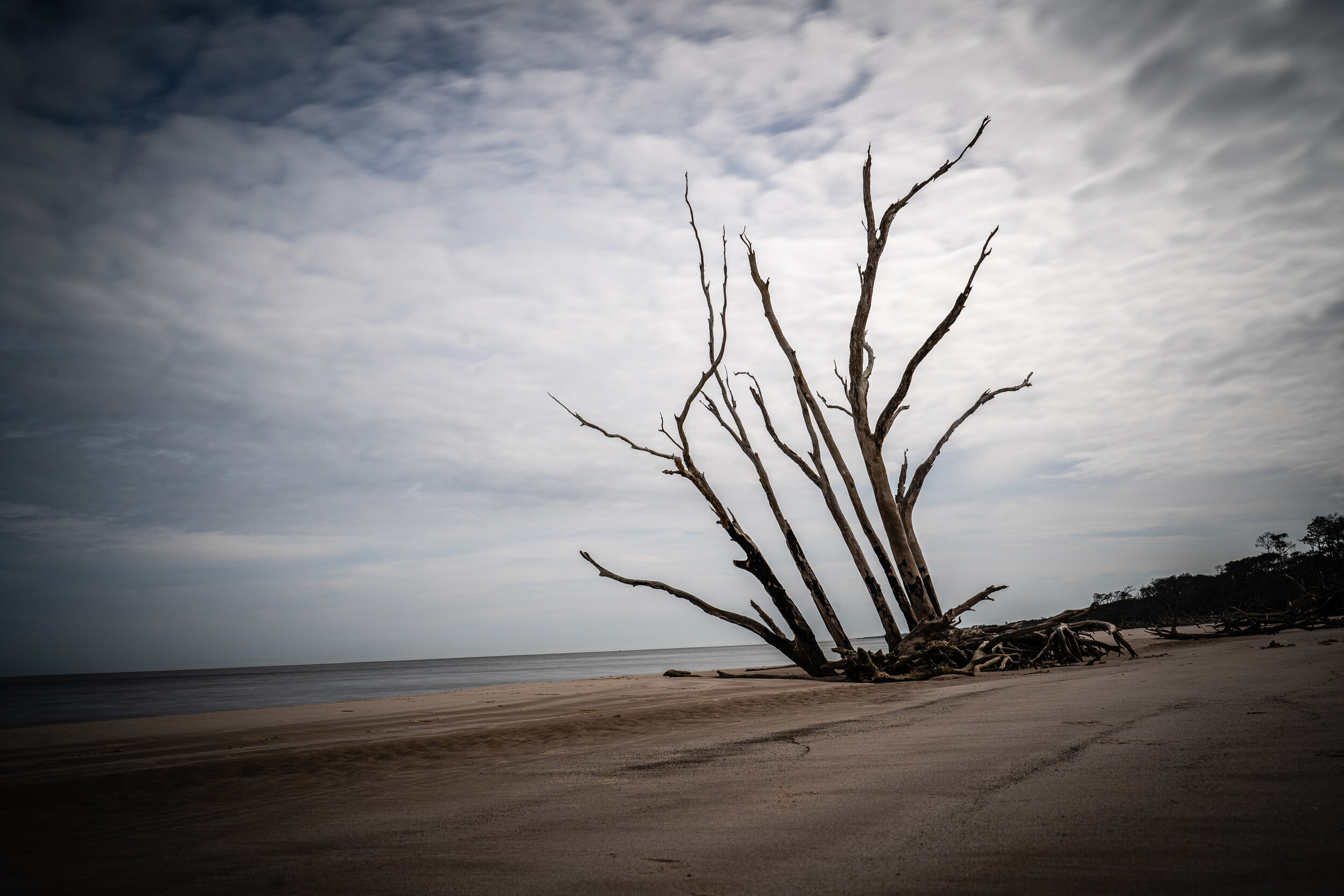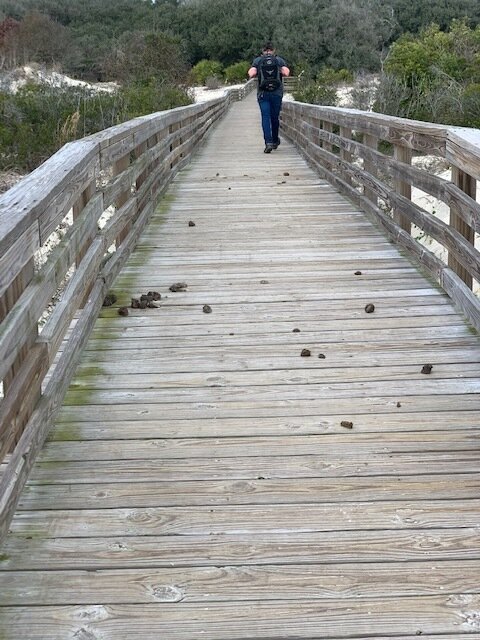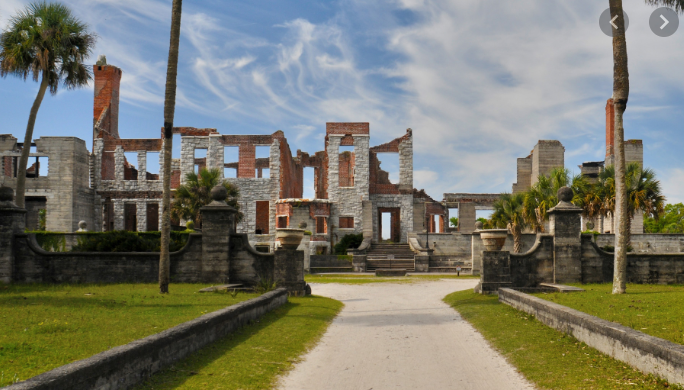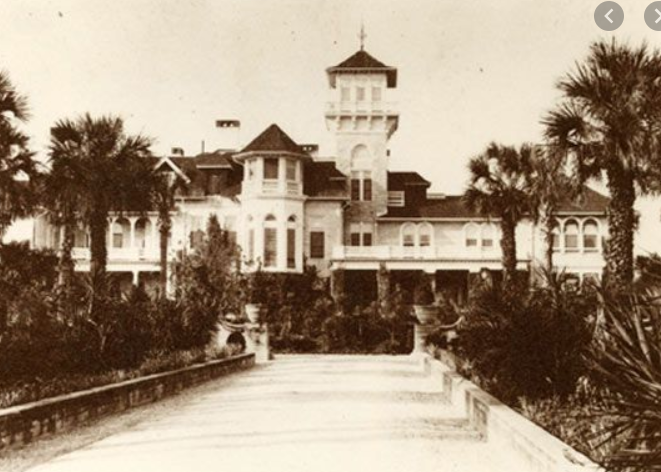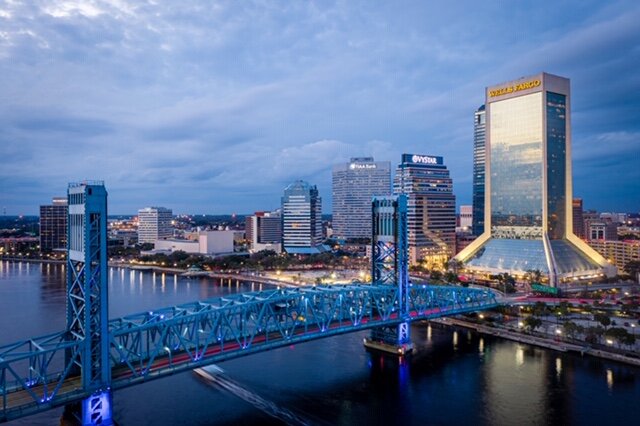Yay…The Beach! Jacksonville, Florida
Tuesday, February 4, 2020
Today we left to go to Jacksonville, Florida. We are getting better at packing up things and getting ready to roll efficiently. Craig noticed this morning that it seems when draining the "black water" from the RV, it doesn't seem to be flowing as quickly as before. Hopefully, it's just his imagination. He got the leveling system to operate the way it should, and the camper is standing on all her legs evenly. Later in the evening, we met up with our friends, Rob and Tracy Harrast, whom we haven't seen in 5 years. It was great to see them again!
We are staying at an RV Park where many full-timers live. We are learning the culture of folks that live full time in a single RV park; it's like a retirement community on wheels. We are amazed by the elaborate and festive decorations many display around their RVs.
This afternoon we realized our black water tank issue was not Craig's imagination. After going through the process to empty it, our display still indicates it is full. We've spent the afternoon combing the internet trying to figure out how to fix our plumbing issue. We put some chemicals we had in the tank. We’re hoping tomorrow everything will have drained.
Wednesday, February 5, 2020
We still have a clogged "black water" tank. Just to clarify, this tank is not to be confused with the pure, drinkable black water that Tom Music was enjoying at the Okefenokee. This black water is the most opposite of pure as you can get. We plan to stop by an RV supply place for some advice later today. But right now we are going to Little Talbot Island State Park. And the website says they are dog-friendly! What a great day for Clay!
We aren't sure why, but Little Talbot turned out to be a nearly deserted beach. Clay had so much fun! FUN!...That is until a beach ranger came out of nowhere to let us know we misunderstood something; there are NO dogs allowed on the beach! A few miles away, we enjoyed long walks on Big Talbot and Amelia Islands also.
On the way home, we stopped at the RV supply store and told them about our plumbing problem. They recommended a chemical with live organisms that literally eat the "issue" out of your tank. Great, we'll take a bottle. Later, we headed to downtown Jacksonville. Craig got pictures of the skyline, and we went to see the oldest living thing in Jacksonville, the Treaty Oak tree.
Thursday, February 6, 2020
Today we drove 45 minutes north, back into Georgia to see Cumberland Island. A 45-minute ferry ride is the only way to get there for the general public. The ferry would drop us off and pick us up about 5 hours later. A storm brewed as we boarded, and we were briefed on where to go for shelter if the weather got crazy while we were stranded there.
Cumberland Island is about 17 miles long and very rich with history and wildlife. We walked a 4 mile stretch on the southern end where the Dungeness Ruins are. We must mention the feral horses on Cumberland Island. There are clearly many here, but today we only saw three. The ones we saw were not frolicking on the beaches as the published images indicate. They were standing in a field just like, well, horses do.
What we did see, though, was the closest look you may ever get of an armadillo. And remember folks, we showed it to you first! Well, maybe us and National Geographic. But I got hissed at by an armadillo for being too close, and no one was paying me for it. We learned so much here and got off the ferry in St. Mary’s just ahead of an incredible storm coming to the area. This evening, we spent our first night in our home on wheels in the middle of a pretty incredible storm. We were happy we didn’t wake up in Kansas.
What We Learned: James Oglethorpe, (founder of the colony of Georgia) was the first to build on Cumberland Island in 1736. He built a hunting lodge and named it Dungeness after a coastal location in England where he was born. • Thomas Carnegie was the less-famous and brother and business partner to Andrew Carnegie, the steel tycoon from Pittsburg, PA. • Thomas and Lucy Carnegie purchased 90% of Cumberland Island and soon began construction on their 59-room Scottish castle, Dungeness, in 1884. This home would be a winter retreat for their family of nine children and a place for the upper 1% of the wealthy to vacation. They built pools, a golf course, and 40 smaller buildings to house the 200 servants that worked at the mansion. • Thomas never lived to see the completion of the mansion, and Lucy later married their property manager. • The Carnegies moved out during the Great Depression. The estate sat empty for nearly 30 years and was destroyed by fire in 1959. • In 1972 The National Park Service bought out most of the 21 landowners in Cumberland Island and worked out a deal with the homeowners that they can stay on the island as long as they and their children live. Then the property must be vacated, so the NPS can continue their work to preserve the entire island as a National Seashore. • The Millers, residents before the Carnegies and the first planters of high-quality Sea Island cotton on the island, helped Eli Whitney develop the cotton gin here in the 1790s. • John F. Kennedy, Jr. and Carolyn Bassette were married here at the First African Baptist Church in 1996. • Dale Carnegie (How to Win Friends and Influence People) is of no relation to this Carnegie family.• Thomas Carnegie's older and richer brother, Andrew, was worth about 350 billion in today's dollars. Andrew gave away 90% of what he had in the last 20 years of his life to build colleges, music halls and over 2000 libraries.

